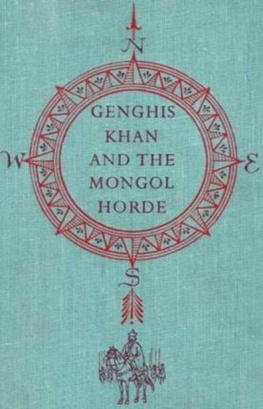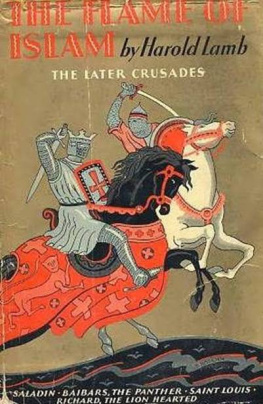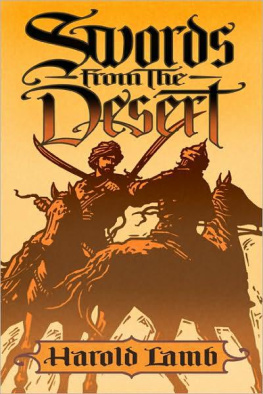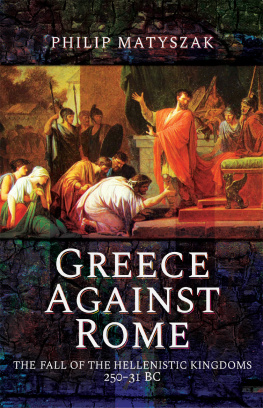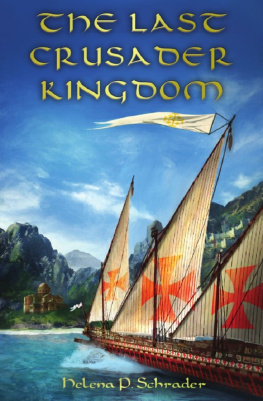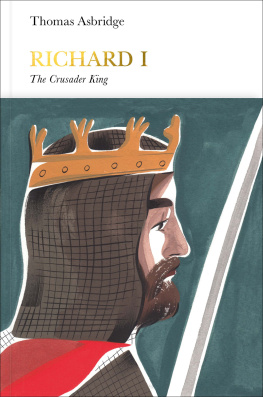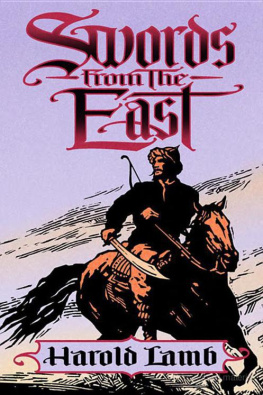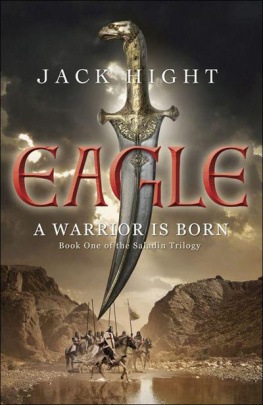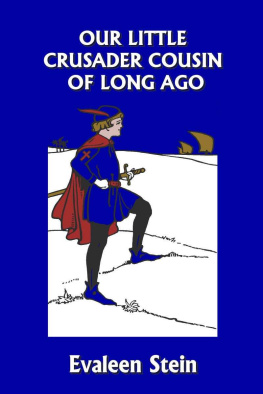







vii
xi
xiii

Those familiar with Harold Lamb's work today likely remember the numerous histories and biographies he wrote from 1927 onward. They might know of his justly-famed Khlit the Cossack stories, but unless they themselves are pulp collectors they are unlikely to be familiar with the fiction printed here, most of which appeared originally in Adventure magazine in the 1920s and 1930s. Almost none of these tales have been reprinted since, and those that were turned up in fairly obscure publications.
Lamb was always fascinated by borderlands and the clash of East and West. Asian cultures were a special interest for him throughout most of his life, especially those of Mongolia. Thus it should be no surprise that a Harold Lamb crusader story is far more likely to feature a foray into the steppes of Asia than to the walls of Acre.
What may be surprising is Lamb's unprejudiced eye when portraying non-Western peoples. Lamb's Mongolians and Arabs are painted with the same insight into motivation as his Western protagonists. He takes no shortcuts via stereotype: foreign does not necessarily equate with evil, and villains can be found on either side of the cultural divide. Lamb went so far as to feature Moslems and Mongols as protagonists, though none of those adventures are printed in this particular volume (look instead to Lamb's Bison Books collections titled Swords from the Desert [2009] and Swords from the East [forthcoming, 2010]).
There are other surprises here besides. Older adventure fiction has a reputation for predictable plotting and melodrama, yet you will seldom find Lamb guilty of either charge. Neither will you find his prose laden with excess verbiage or talking heads, nor will you see any sign of that deadliest sin for adventure fiction, slow pacing. The action flows swiftly from scene to scene, and the images are sharply etched - always against thrilling, exotic, painstakingly researched backdrops.
Robert Weinberg's excellent essay introduces you to both Adventure magazine, Lamb's main fiction outlet, and "The Making of the Morning Star." As much as I enjoy "The Making of the Morning Star," which may yet be deservedly hailed as an adventure classic, I love the two Nial O'Gordon novellas contained within these pages even more. "The Golden Horde" and "Keeper of the Gate" are fabulous works penned at the height of Lamb's descriptive power. The triumphant final notes of these pieces ring in the air long after the reader has set them down, echoing with somber majesty. They were the very last stories he ever wrote for Adventure magazine. See if you, too, upon reading the last paragraph of "Keeper of the Gate," wish that Lamb had taken us with Nial O'Gordon on to Cathay. Surely if there had been more tales of Nial it would be the adventures of this character, even more so than those of the wily Cossack Khlit, with whom Harold Lamb would be most associated.
The other stories within this book are shorter tales from Adventure, Collier's, and Cassell's. Collier's preferred stories of briefer length than those Lamb usually wrote for Adventure, and seemed also to prefer work from Lamb where the conclusion turned upon the hero winning the hand of a heroine. As a body of work the Collier's tales are more repetitive than Lamb's earlier fiction. Despite these constraints, Lamb managed to inject variety into many of them, and most of those dealing with crusaders are printed here the rest are printed in other Bison Lamb collections.
In the 195os Lamb wrote a series of stories for the Saturday Evening Post where famous historical events were re-dressed-usually to include some romance a la the Collier's pieces-and given a contemporary framing story. To my eyes these framing stories are forced, and the stories themselves pale in comparison to Lamb's earlier work. One, though, Lamb's last published historical story, has the old fire. Thematically it doesn't belong in this volume, but it fits even less well in the other books in this book series-the protagonists, at least, come from the West. Step around the awkward frame opening to "Secret of Victory," and you'll be swept into an adventure about the fabled sword of Attila and a last desperate battle to keep the Hun from Roman lands.
The intent of this new series of collections is to reprint all of Harold Lamb's magazine historicals not already collected in Bison Books editions. Lamb's crusader stories don't end with this volume: crusaders make an appearance in Swords from the Desert, and the appendix in the same volume has dozens of pages of historical information Lamb wrote on the subject. There are yet more crusader stories, for crusaders seem to have been Lamb's favorite historical subject after Cossacks. I was forced to exclude three short crusader novels from these collections, due both to space limitations and because another publisher is already caring for them in fine editions. For some years the first two books of the Durandal trilogy, Durandal and The Sea of Ravens, have been available in marvelous illustrated volumes from the publisher Donald M. Grant, and the third book, Rusudan, should follow soon. I urge you to seek them out if you have not already done so.
Should these tales fire your interest in researching the historical period, look no further than Harold Lamb's own two-volume set on the Crusades. Later collected in one large book, both volumes, Iron Men and Saints and The Flame of Islam, can still be found on many library shelves. Lamb earned a medal from the Persian government for these books in recognition of the accuracy of his research, and the acclaim helped launch the rest of Lamb's career. The crusade books were well received in America and led to movie mogul Cecil B. DeMille hiring Lamb to cowrite his motion picture The Crusades, the first of many projects they worked on together. One interesting anecdote of Lamb's work on the film survives, reprinted here from Charles Higham's book Cecil B. DeMille ~Scribner's, 1973:
Harold Lamb was constantly present during the shooting of the siege [of Acre], dodging arrows and narrowly avoiding being crushed by the siege tower. "Is that realistic enough, Mr. Lamb? " the director asked him at the end of the first exhausting rehearsal of the conflict."Not nearly," Lamb replied, wiping his spectacles. "Those soldiers seemed almost fond of each other. Medieval warriors were infinitely more sanguinary, let me assure you. What you need is a thousand battle axes red with blood.""That would make it a shambles, " DeMille said.
"Exactly. And also history," Lamb primlyreplied. (242)
Lamb thereafter cowrote a multitude of screenplays for DeMille and spent the rest of his working life either drafting for the cinema or producing biographies and histories for Doubleday-putting aside his service for the oss during World War II, when he was posted to Persia. I discuss that period of his life in more detail in Swords From the Desert.
Next page

